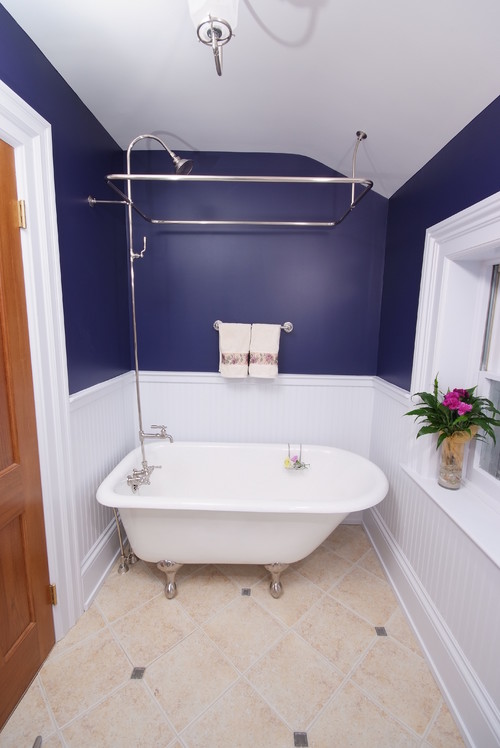The most common bathtub is the clawfoot tub. It is preferred by many for its classic style and timeless and luxurious feel. The clawfoot was popular then as it is today. In fact, it was very popular in the 19th century and was considered a luxury item.
The clawfoot was influenced by the iconic designs of furniture in the 18th and 19th centuries. Its ball and claw design originally came from Holland and was inspired by the Chinese motif of a dragon clutching a precious stone. This design later evolved into a claw holding a ball and spread from Holland to the United States in the early 18th century. The eagle’s claw or talon was a popular variation of the ball and claw design in America, while the lion’s claw was a hit in England.
Unlike the bathtubs of today, the first tubs were movable items and were made of tin or copper sheets. Since tin and copper presented several problems, the J.L. Mott Iron Works Company decided, in 1873, to make clawfoot bathtubs out of cast iron and porcelain. The American Standard also adopted a similar idea – lining the interior of the tub’s cast iron with porcelain. This was appealing to many as it not only provided a smooth and flawless finish, but also made the tubs easy to clean. As technology progressed and tub prices decreased, this luxury item became accessible to more people.
Through the years, tub makers and manufacturers have produced an assortment of shapes, sizes and styles for the clawfoot tub. Although there are different types of tubs, the clawfoot has five major styles that a buyer can choose from:
- The Classic Tub – The Classic Tub is the standard and original clawfoot tub. The front end is squared or flat and has the faucet and a drain, while the other end is rounded.
- The Double Ended Tub – In this style, both of the tub’s ends are rounded and its faucet is placed in the middle. This is convenient since one may bathe on either side of the tub.
- The Slipper Tub – This style is marked by its squared front end and high back. Its back is raised higher than the other which makes it perfect and comfortable for reclining and lounging.
- The Double Slipper Tub – Here, both ends are raised. Its double high back style is quite elegant and charming and gives one the opportunity to recline and relax at either end of the tub.
- The Pedestal Tub – This style was influenced by the Art Deco movement of the 1920s and 1930s. Instead of claw feet, the tub rests on a pedestal or on a sculpted base. It is often referred to as free standing. While it is different from the other styles, the pedestal tub still has the configuration and body of a clawfoot.
The variety of choices and products today can be a boon and a bane for the modern consumer. In selecting a bathtub for the home, it is definitely an advantage to know the history behind and the styles available for the clawfoot tub. To know more about clawfoot, vintage and classic bathtubs, visit the Tub Connection. This is a site that features bathtub and bathroom products at great prices. Visit www.thetubconnection.com.
*Featured Image by Bozeman Interior Designers & Decorators Claudia Krevat





Leave a Reply